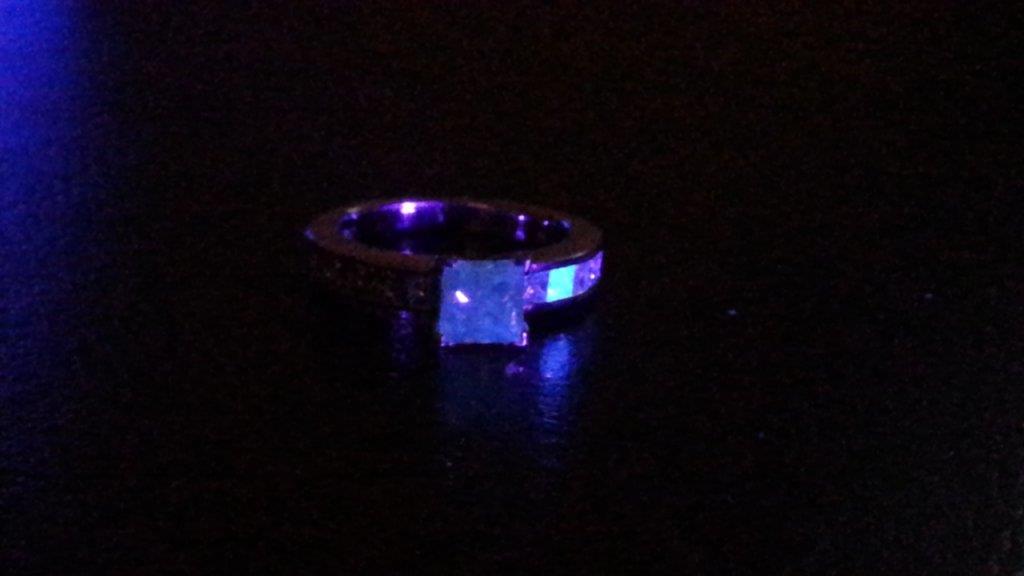Cuckoowaif
Stephen Gibson
Damn ! I think I have picked up a couple of these , wondered what they were , and threw them back ! I obviously have a lot to learn ....


I see stones like this sometimes in the Mt Crawford to Williamstown region of SA. Almost crystal clear through the whole stone. But I have always assumed them to be quartz, and that is probably a correct assumption. How would I tell the difference? I have zero experience in stones, although I like to collect the tiny pink. red and yellow ones that live amongst the black sand, but that is probably better in another thread.........Heatho said:Inverell diamonds at the tourist info centre.https://www.prospectingaustralia.com/forum/img/member-images/487/1384932834_20131120_1017442078359393.jpg


SWright said:Hi all
Oh and btw diamonds are an unstable form of carbon at the surface of the earth. Put them into a decent fire and they will actually revert to the stable form of carbon at the surface of the earth - graphite.
Araluen
Varts said:https://www.prospectingaustralia.com/forum/img/member-images/1229/1396009215_image.jpg
Are these anything like them ?
hi mate get them tested i foound two west of lithgow as for crookwell reefs? they come via pipes of kimberlite and no other way in other words worn down diamond pipes from ancient super volcanics and yes we have a lot all the way to vic,two look like diamonds but pics are no way to say yes they are . a tester underr 200 is worthless too. one thing many do not know , an old diamond mine is now under water in the middle of our drinking water supply for sydney thats 100% fact how productive not much known but if you was making a killing in opal,gold,tin,copper or diamond i assure you itsd best kept in your family home. to find diamond they say is like being struck by lightning once a year for 20 yrs on the same day or a million to one for gem quality over 10gram its a billion to one , thats facts i can give you , no bull just facts, cheersGold689 said:Hi Everyone,would like to start a topic about our very own Diamonds here in NSW.
So far we have the Oberon diamonds Pics, but haven't found the famous Binda diamonds or Crookwell to Mittagong area.
If anyone have their own collection it would be great to see them in pics.
https://www.prospectingaustralia.com/forum/img/member-images/421/1382051397_oberon_diamonds.jpg
It would be great to have an idea what to look out for, before we toss them.
Cheers,
"B"
Not a coincidenceheadbut said:Pretty much the same locations as Sapphires !
Really useful test 8.(Paydirt said:SWright said:Hi all
Oh and btw diamonds are an unstable form of carbon at the surface of the earth. Put them into a decent fire and they will actually revert to the stable form of carbon at the surface of the earth - graphite.
Araluen
I have seen a video clip where they heat a diamond red hot with a blow torch and then drop it in a beaker of liquid oxygen. It spins around like a piece of sodium in hot water and gets smaller and smaller. The carbon combines with the oxygen to turn it into carbon dioxide - one disappearing diamond.
Coloured diamonds are beautiful - I once saw a collection in the strong room of a mine in Pretoria (they said there was little market for them). Beautiful intense colours combined with the lustre of diamondheadbut said:Whilst diamonds are valuable & rare , to me , the coloured gems are much nicer to look at
Sounds a bit dubious at that sizeBen78 said:You'll all like this...
The Maitland Mercury & Hunter River General Advertiser Thursday August 5 1869 said:A Diamond.-On Monday or Tuesday last, an old man arrived in town with a number of rubies, garnets, sapphires, and a large diamond, which he had obtained somewhere on the Rocky River. The discovery of this diamond has caused a great deal of excitement in town. The Bank of N. S. Wales have advanced 700 -upon it The diamond is about the size of a hen egg, it is not yet known the real value of it.
Would be interesting to see what happened to it...
Those are not confined to the outside, but reflect the internal crystal structure of the diamond (and are only obvious on the outside surfaces)headbut said:What does facinate me about them is the patterns that seem to form on them , look like they have been hammered into the stones
https://www.prospectingaustralia.com/forum/img/member-images/569/1385035710_58445de2.jpg
The non-wetting properties of diamond are used to recover them from crushed rocks in diamond pipes. They are run over grease - the diamonds stick to the grease, the rock does not.SWright said:Hi all
Diamonds are generally quite easy to tell from other stones. First they are heavy and will get trapped in any sluice, second they cannot be wet - this is a strange thing but trust me. It means that diamonds will always, unless disturbed, be found on the bottom of a stream like gold - or on clay bottoms. They will generally retain their octahedral (Diamond shaped) shape even after travelling long distances. Shattered ones only occur in or near primary deposits and will more often than not be a part octahedral shape.
If you think you are in a diamond producing area, like Beechworth, first jig your material, then pan it. If there are any white, or suspicious stones that are not obviously other stones such as sapphires, zircons and such, then you can do a simple SG test or have them X rayed.
araluen